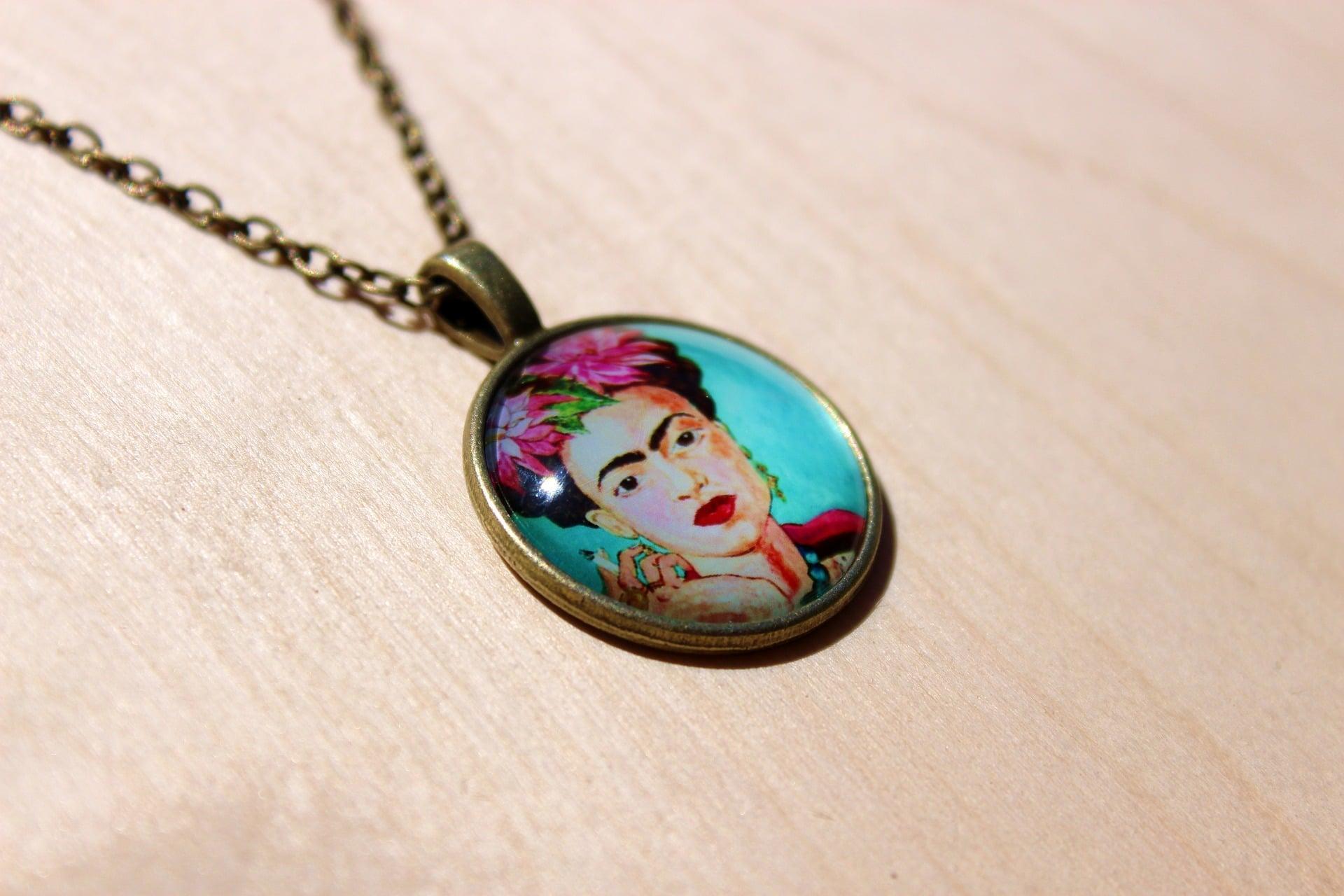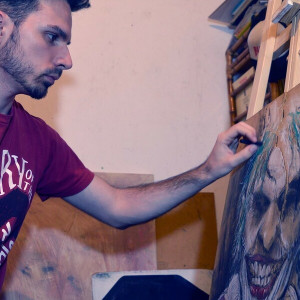Frida is famous for painting herself. One could hardly blame her, as her condition limited the number of subjects she might find to paint. Still, she displayed considerable imagination and versatility in depicting herself. Some called her work surreal while others thought her expression was naive. Both of those labels miss the depth of Frida Kahlo artwork.
| 📃Title | 📅Year painted | 🔎What it depicts |
|---|---|---|
| The Bus | 1929 | People dressed in various styles to depict their status, sitting next to one another. |
| Urban Landscape | 1925 | Brown buildings with black smokestacks and powerlines attached to a red pole. |
| The Two Fridas | 1939 | Two Fridas, one dressed conservatively with her heart cut out, the other dressed more colourfully with the heart on its chest, and a blood vein connecting the two. |
| The wounded deer | 1946 | A deer with Frida's face pierced with arrows. |
| Diego and I | 1949 | A bust painting of Frida with her hair down, crying, and Diego's face painted on her forehead. |
| Self Portrait with Monkey | 1938 | Frida dressed in white with a small black monkey looking over her shoulder |
| The Broken Column | 1944 | Frida, long hair flowing, exposes her spinal column |
| Self-Portrait with Thorn Necklace and Hummingbird | 1929 | A young girl with her hair in pigtails, sitting on a chair, wearing a green dress with red spots and white lace trim on the short sleeves. |
| What the Water Gave Me | 1938 | A pair of legs submerged in a tub with the feet above the water, and a collection of stuff on top of the water. |
| Time Flies | 1929 | Unsmiling Frida wearing white, before a window framed in green curtains, with an airplane flying across the window. |

Frida Kahlo Artwork: the Art of Being Frida
Frida was born into a relatively happy family, though she and her mother never got on well. Her father brought European flavours into the home; his German roots gave Frida exposure to European art. As a child, she enjoyed creating art but never saw it as a career path.
When Frida was six years old, she was stricken with polio, leaving her right leg incapacitated.
In September 1925, on her way to medical school, she suffered major injuries resulting from a bus accident. She was 18 years old at the time. Till then, she’d only played with joining the ranks of great female artists but now, she had long hours filled with pain and nothing much to do. So began the journey to the iconic Frida Kahlo paintings we celebrate today.
Frida Kahlo Most Famous Paintings
I suffered two grave accidents in my life. One in which a streetcar knocked me down. . . . The other accident is Diego.
Frida Kahlo
For much of her life as an artist, Frida was overshadowed by her husband's artistic fame. Much like Artemisia Gentileschi, the post-Italian Renaissance painter, Frida did not make an impact on the art world until long after her death - the mid-70s, to be exact.
That was thanks to a scholarly text that questioned the lack of female representation in the Latin art canon. As the world came to know Frida's art, Fridamania grew. The Mexican government began to restrict exports and sales of her work, claiming them as national cultural heritage representations.
For these reasons, we lack information about Frida's motivation in choosing her subjects and, often, exactly when and where they were painted. Still, we explore these works with the bit of information available.
The Bus
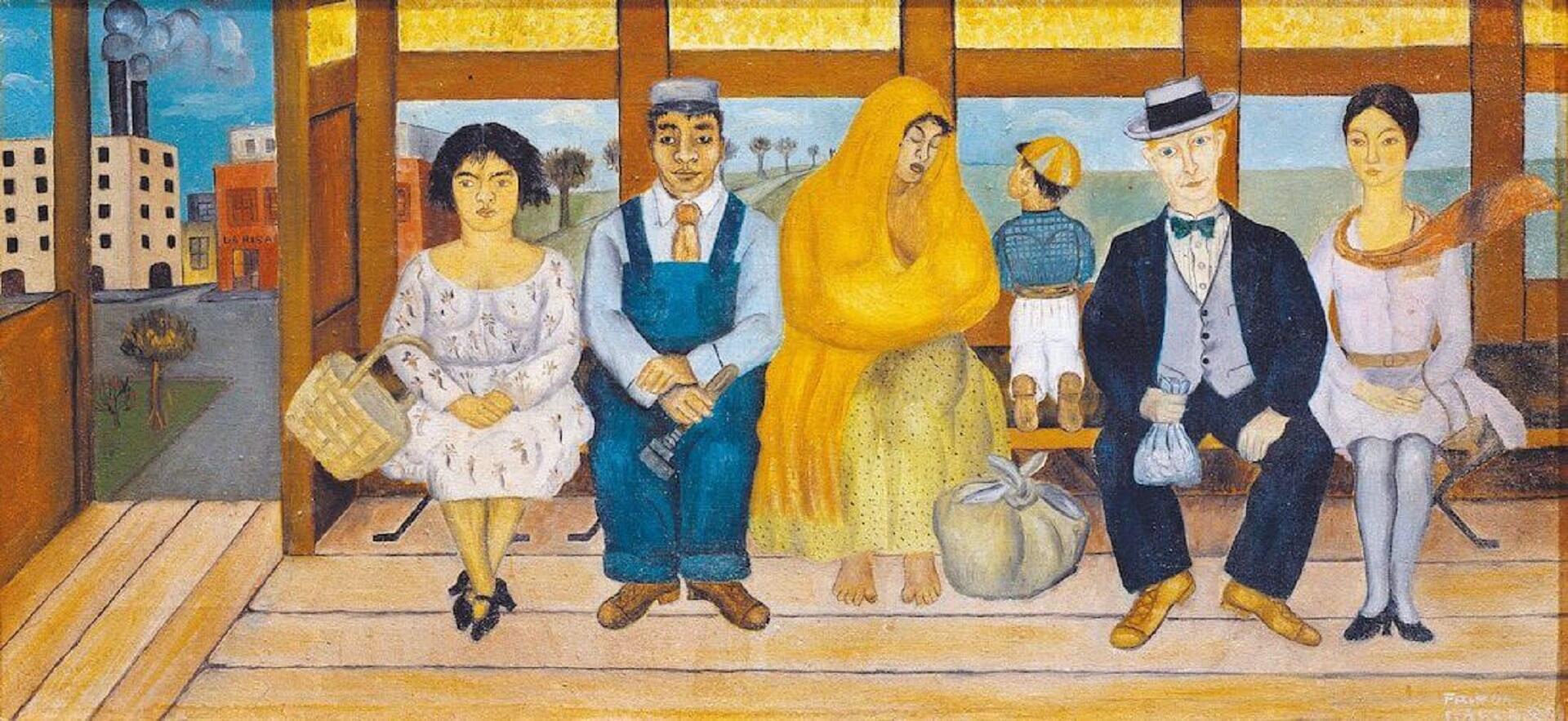
Of all the original Frida Kahlo paintings, this one describes her memory of her life-changing accident the best. The bus she had been riding on was made of wood, and crowded. However, this depiction is far more gentle than her memory of the scene must have been.
The Bus is also a reflection of her political views, as each passenger represents a different social class. Frida was politically active for most of her life, veering between competing ideologies as suited the times and, often whose company she was in.
Urban Landscape
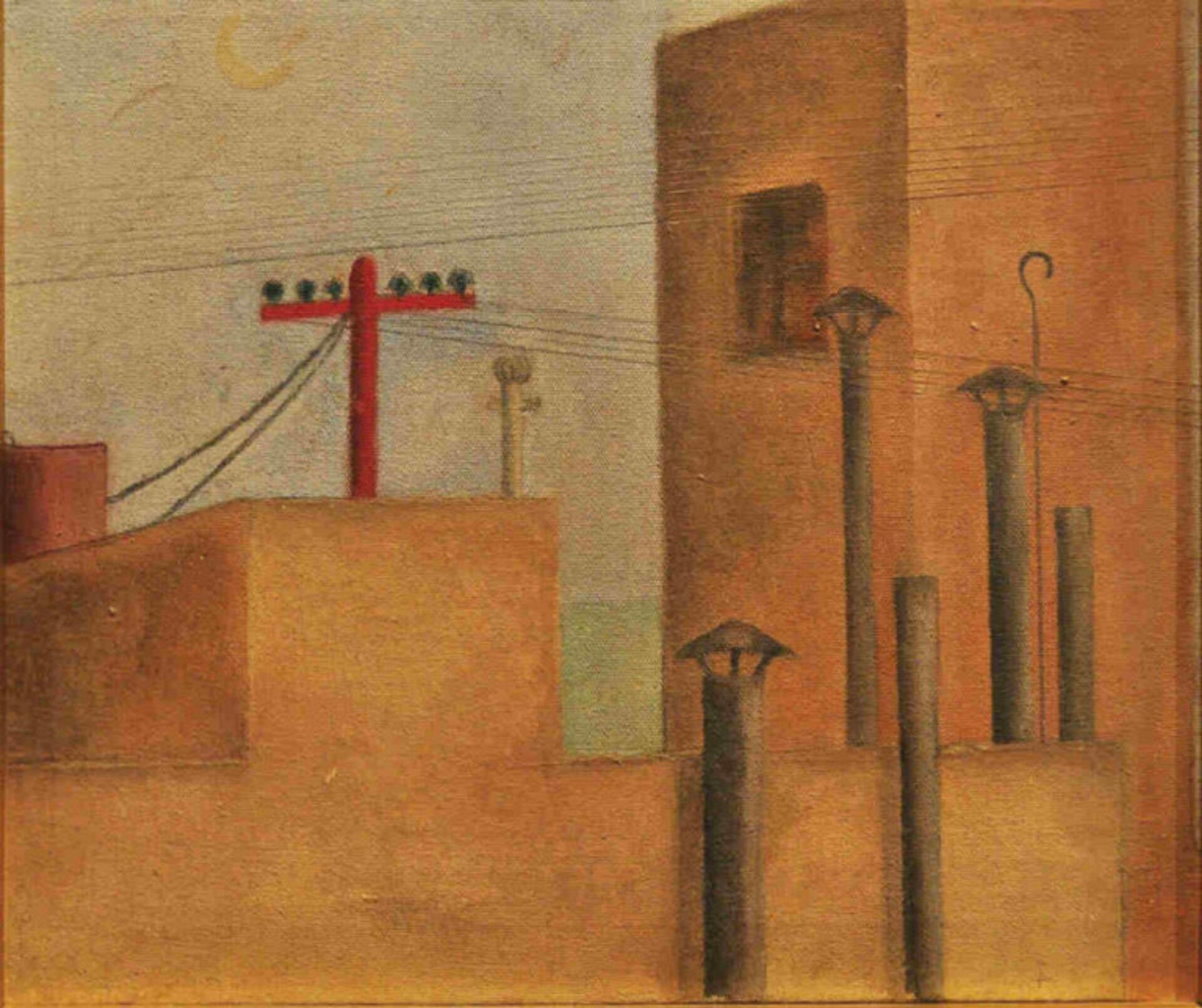
It's hard to guess the perspective of this painting because it seems to capture the buildings from up high. Perhaps Frida captured this skyline through a window or from a rooftop. It gives a flavour of impressionist painter Mary Cassatt, whose work was similarly hazy yet suggestive.
Urban Landscape seems to represent a modernising Mexico. We see the chimney flues in the foreground that may represent traditional means of ventilation for homes and businesses. However, centred in the background runs a distribution of power lines, glaring red with promise.
The Two Fridas
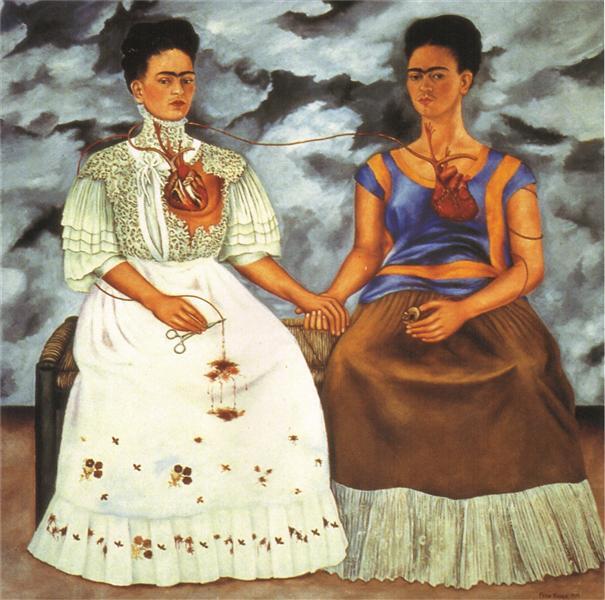
In all the painting classes near me, The Two Fridas is all the rage. By all accounts, this is Frida's largest and most famous work. Some speculate that it represents Frida's heritage: one in traditional European (Victorian) dress, and the other one wearing Tehuana-style clothing.
Art historians think that these two Fridas represent Diego's feelings towards her. He hated European Frida, so he 'cut her heart out' and ignored her. He loved the Mexican Frida, so her heart blossomed. As always, we can't know what Frida's views were but we can see that Frida's heart is healthy.
The Wounded Deer
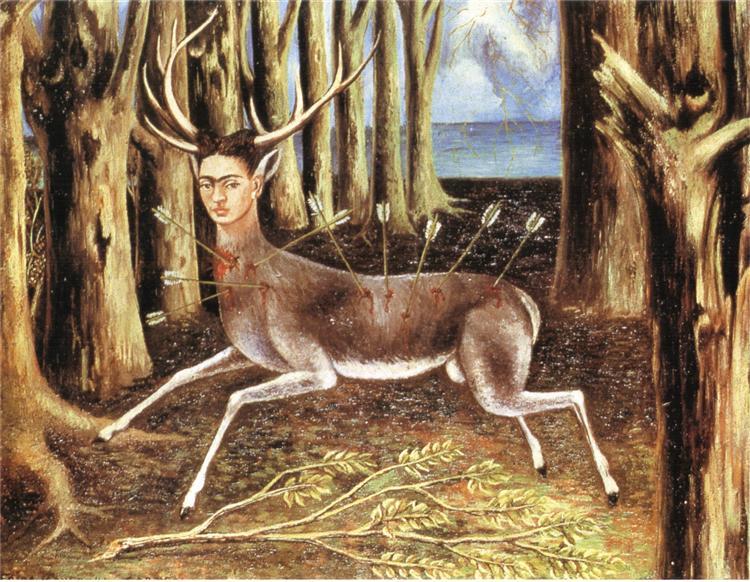
This Frida Kahlo artwork is not hard to interpret. She's demonstrating her many wounds, physical and emotiona. It's no accident that the arrows ridge along her spine and in her chest, where one might find one's heart.

Diego and I
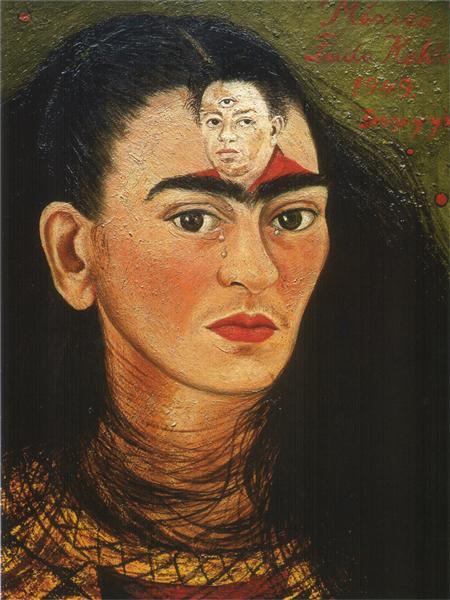
Of all the most famous paintings by Frida Kahlo, this one is among the most heart-rending. Frida, a tough woman used to pain, depicts herself crying. This is a show of vulnerability absent in her other self-portraits. It's also a testament to the hurtful impact Diego had on her.
Self-Portrait with Monkey
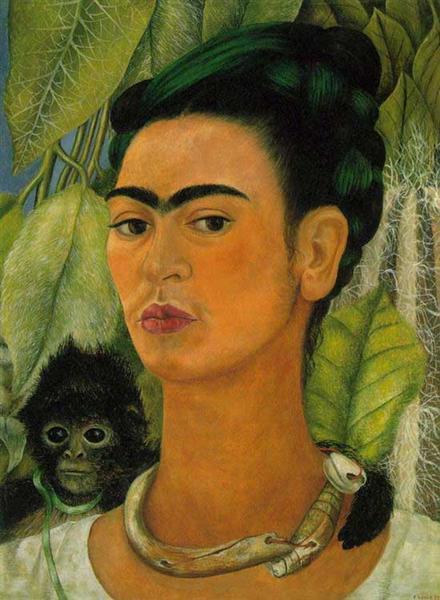
Frida was commissioned to paint this tableau when business magnate A. Goodyear saw a portrait Frida had painted of herself with her pet monkey. She regretted that that one had already been promised to her friend. She agreed to paint a similar image for Goodyear. You can study more Frida Kahlo artwork and learn her style in your painting course Melbourne.
The Broken Column
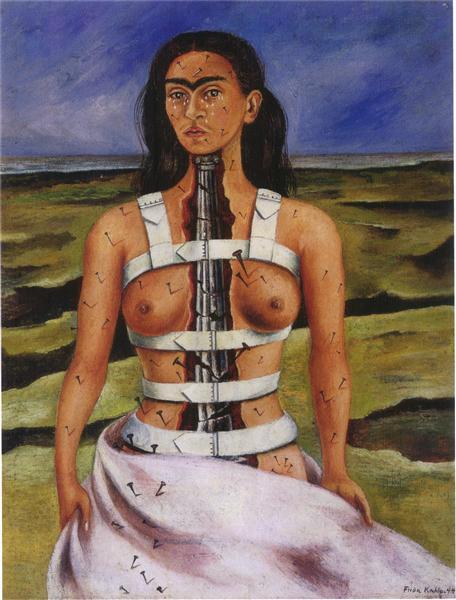
Here, we see Frida's brokenness, and how she tries to keep herself together. It reflects her feelings of isolation, as she painted herself on a barren, broken landscape. She's expressionless, which is typical of her stoic demeanour, though we can see the tears on her face.
Nails cascade down her right side, symbolising the pain and weakness from her bout of childhood polio. The white metal likewise recalls polio, though it may serve the double meaning of placing restrictions on her. She drapes a cloth over her lower half, not in modesty but as an expression of sensuality. The American artist Georgia O'Keeffe also expressed subtle sensuality in her work.
Self-Portrait with Thorn Necklace and Hummingbird
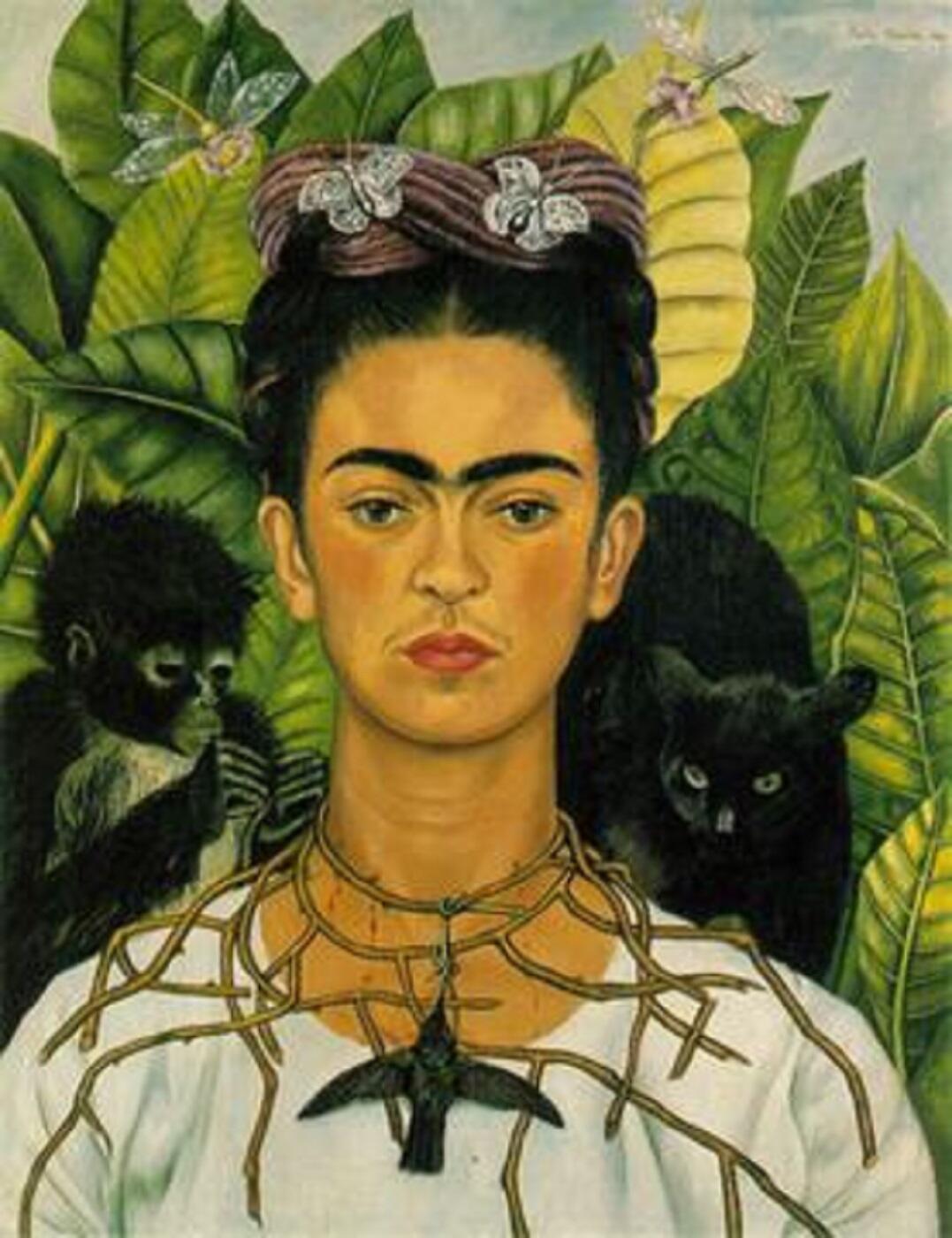
Frida painted this tableau after her divorce from Diego. Her prominent brows, straight-on stare and lack of smile dares the viewer to make some comment about her status. The black animals, one over each shoulder, accent her white clothing while accentuating her upswept black hair.
The thorn necklace captures the eye. It encircles her neck as the thorns draw blood, and tumbles down her shoulders. From it hangs a black bird, wings spread, apparently dead. Cultural interpretation presents the bird either as a love charm or an Aztec symbol of war. We don't know what Frida had in mind when she painted it; perhaps you could discuss it in your painting courses Sydney.
What the Water Gave Me
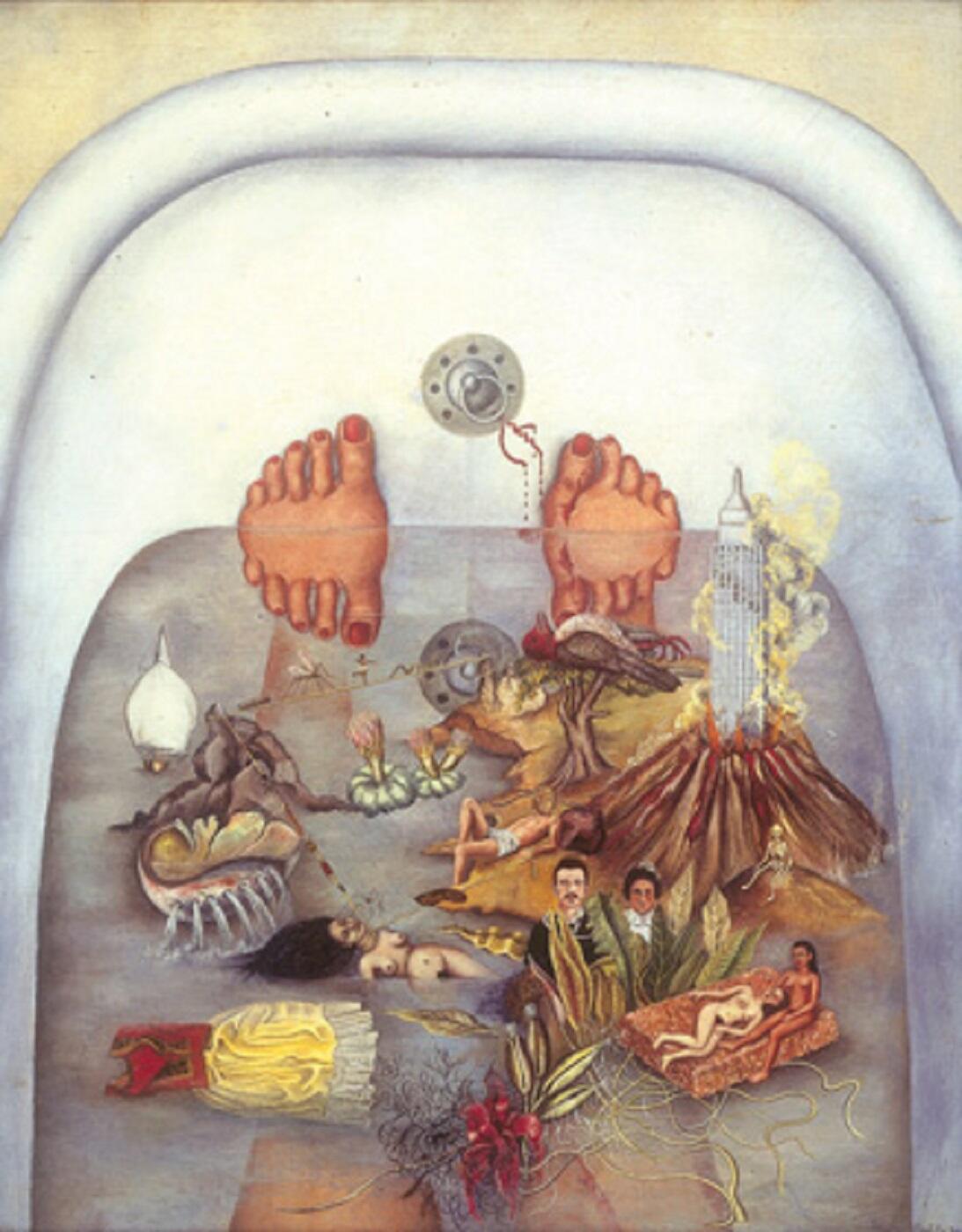
Some call this Frida's autobiography. The right foot is slightly mangled, reflecting her experience with polio. The items in the tub are symbols of her experiences, not the least of which was finding herself submerged. Diego, the bus accident and convention all served to 'drown' her, and her loneliness further kept her underwater.
Time Flies
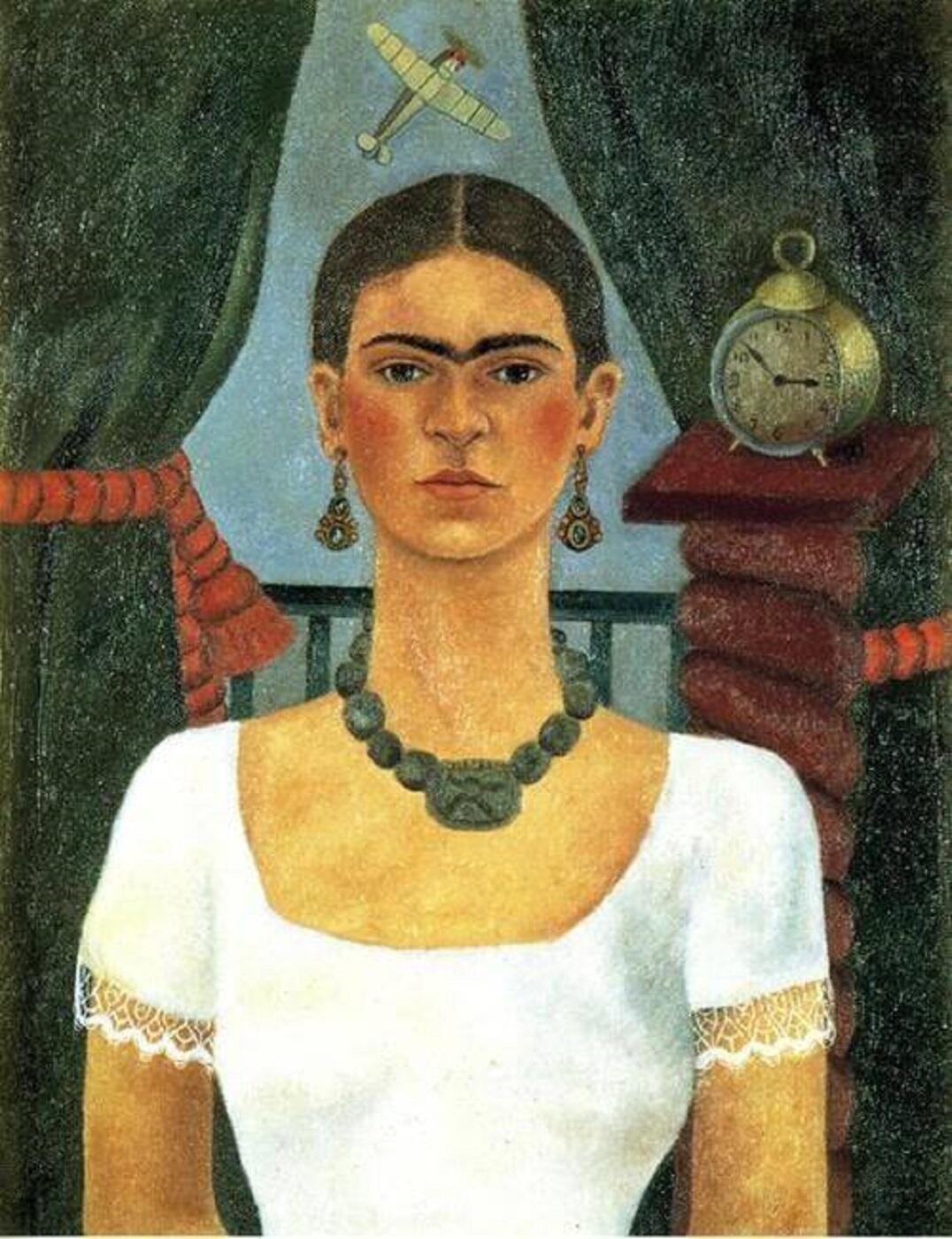
The American artist Helen Frankenthaler was Frida’s opposite in just about every way, and nowhere is that more obvious than with this painting. Here, a still-hopeful young Frida is unmarked by the scars that her later life would inflict. Whereas Helen's paintings were full of light and promise, Frida seemed to sense her path would be more solemn.
Frida painted a few years after the bus accident, just as she was beginning her life with Diego. She had travels across the United States to look forward to, and all the excitement of being attached to a famous painter. Sadly, life was hard for her in the US, and she was married to a faithless man.
Over time, the most famous paintings by Frida Kahlo would reflect those experiences. Frida’s style of painting may defy classification, at times. However, one thing is certain: she takes a front-row position among women painters.

